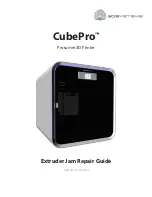
60
The magnetic encoding module encodes onto
tracks in accordance with an ISO 7811-2 magnetic
stripe. Refer to the following diagram for track
locations:
B. Track
Locations
TRACK1 0.110"
TRACK2 0.110"
TRACK3 0.110"
0.130"
0.140"
0.223" 0.353" 0.493"
C. Sending Track
Information
Magnetic track data is sent in the form of text
strings from the application software to the printer
driver along with all of the other printable objects
within your card design. In order for the printer
driver to differentiate between magnetic track data
and the rest of the printable objects, the magnetic
track data strings must be uniquely Òtagged.Ó In
other words, specific characters must be added to
the magnetic track data in order for the printer
driver to know which data is to be encoded, which
tracks to encode, when the track data stops and
starts, and so forth. In some cases, these specific
characters are automatically added to the string of
track data by customized ID software applications.
In most cases, however, the user must manually
add these characters to the string of magnetic track
data. If these characters are not added to the track
data, the text intended for the magnetic track will
most likely appear as printed text on the card. To
avoid this, track information must be entered as
follows.
When entering track data, the Ò~Ó character is
entered first, followed by the track number (1, 2, or
3) on which you intend to encode the data. The
data to be encoded should then follow. The first
character of this data string must be the trackÕs
specific Start Sentinel (SS) and the last character
must be the specific End Sentinel (ES). The
characters or data in between the SS and ES can
include all of the valid characters specific to each
track. The number of these characters, however, is
limited by each trackÕs maximum character
capacity. When segmenting track data, the
appropriate Field Separator (FS) must be used. The
following table shows the SS, ES, FS, and the valid
characters defined for each track.






































